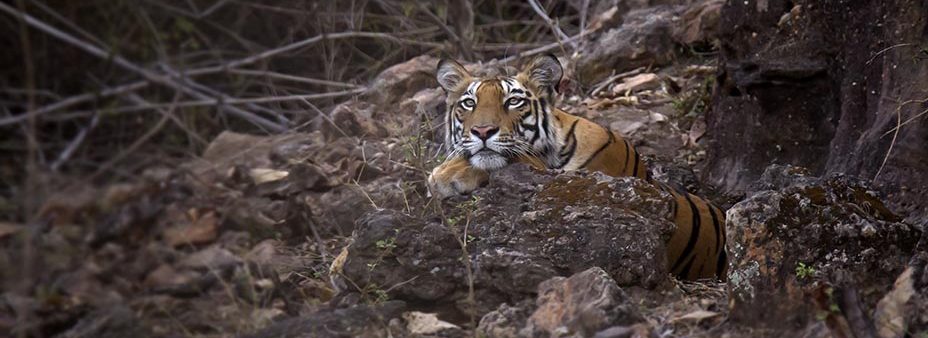
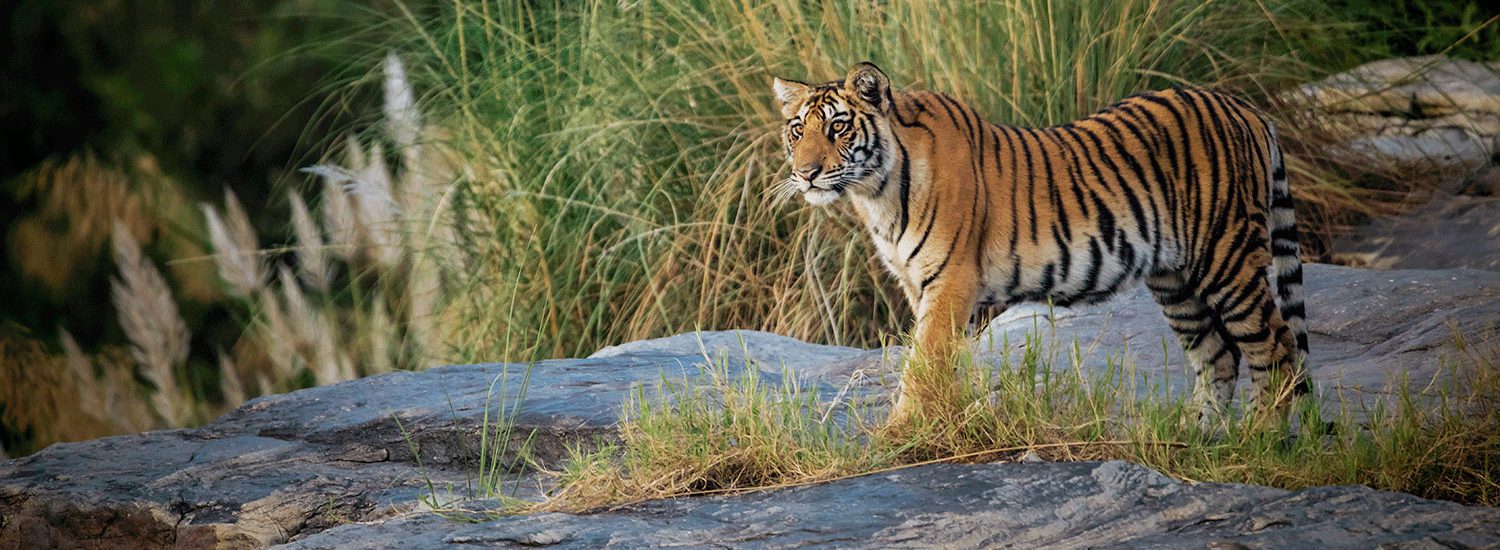
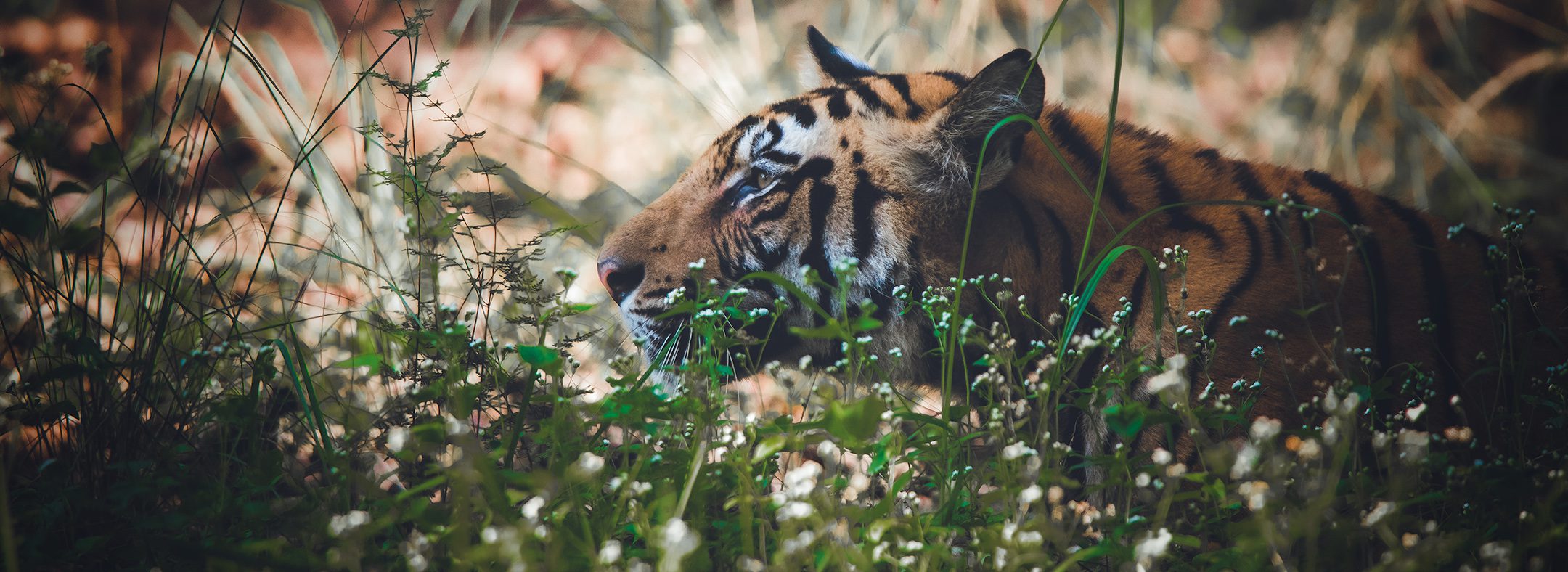
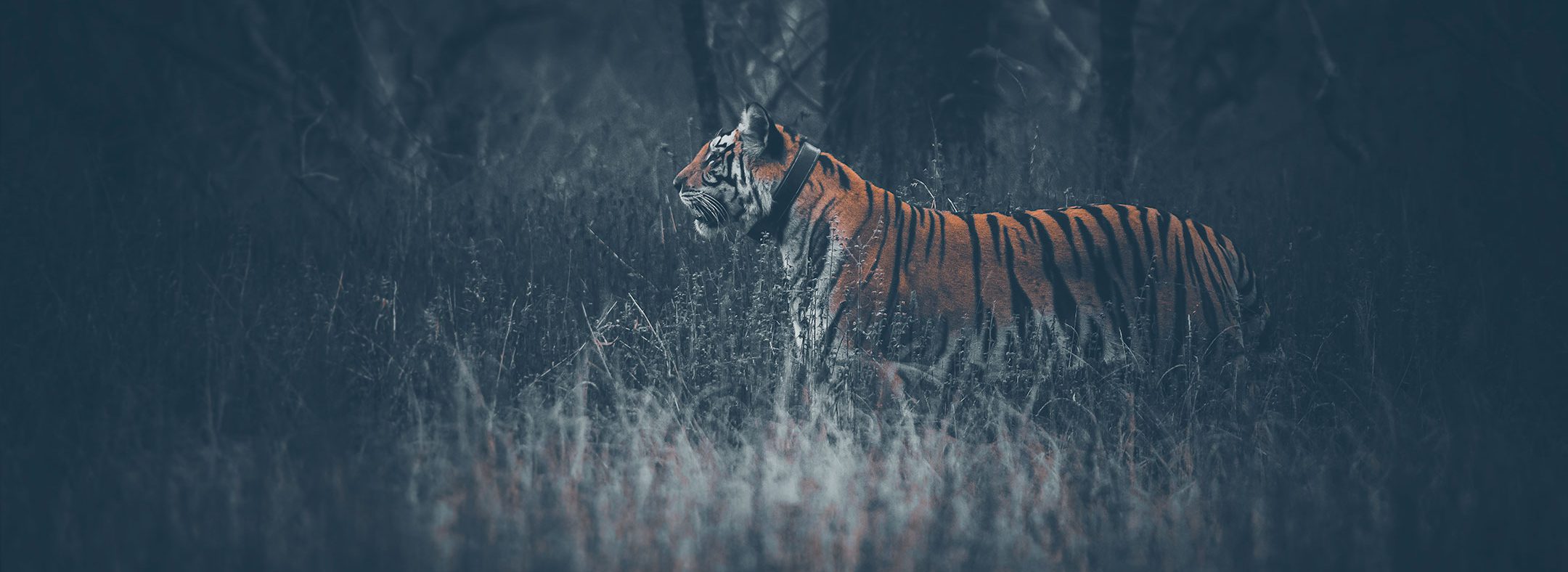
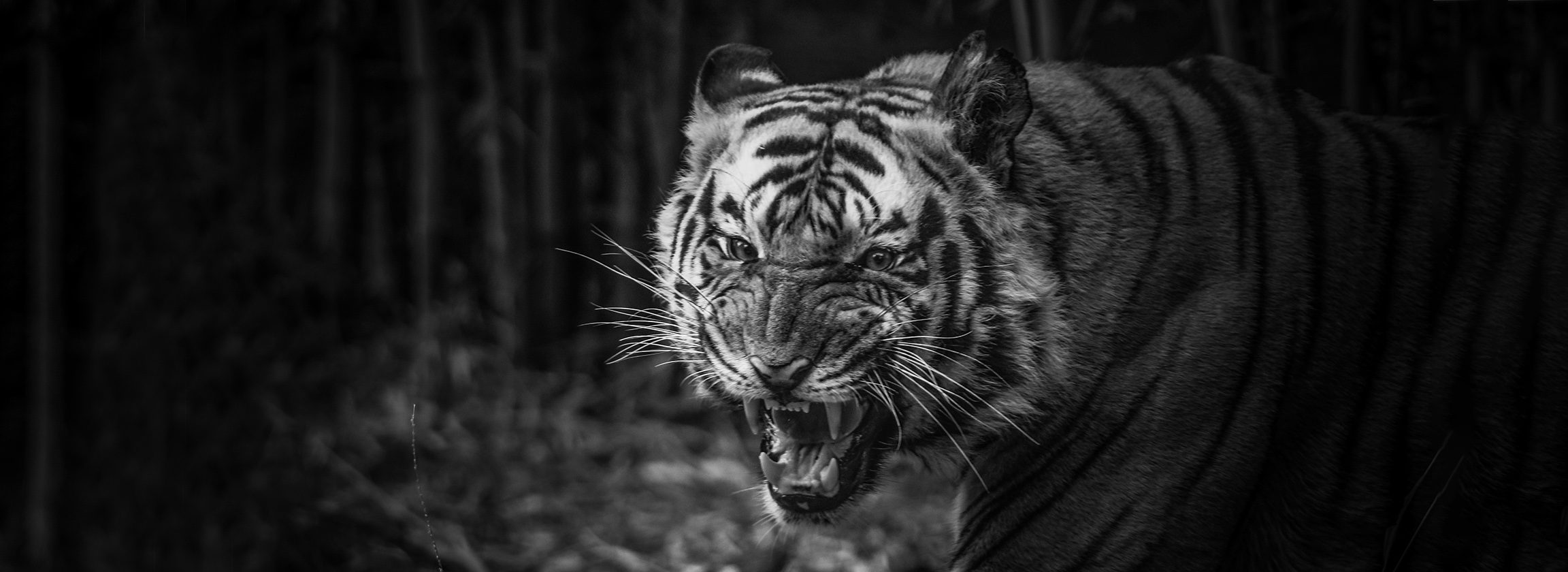
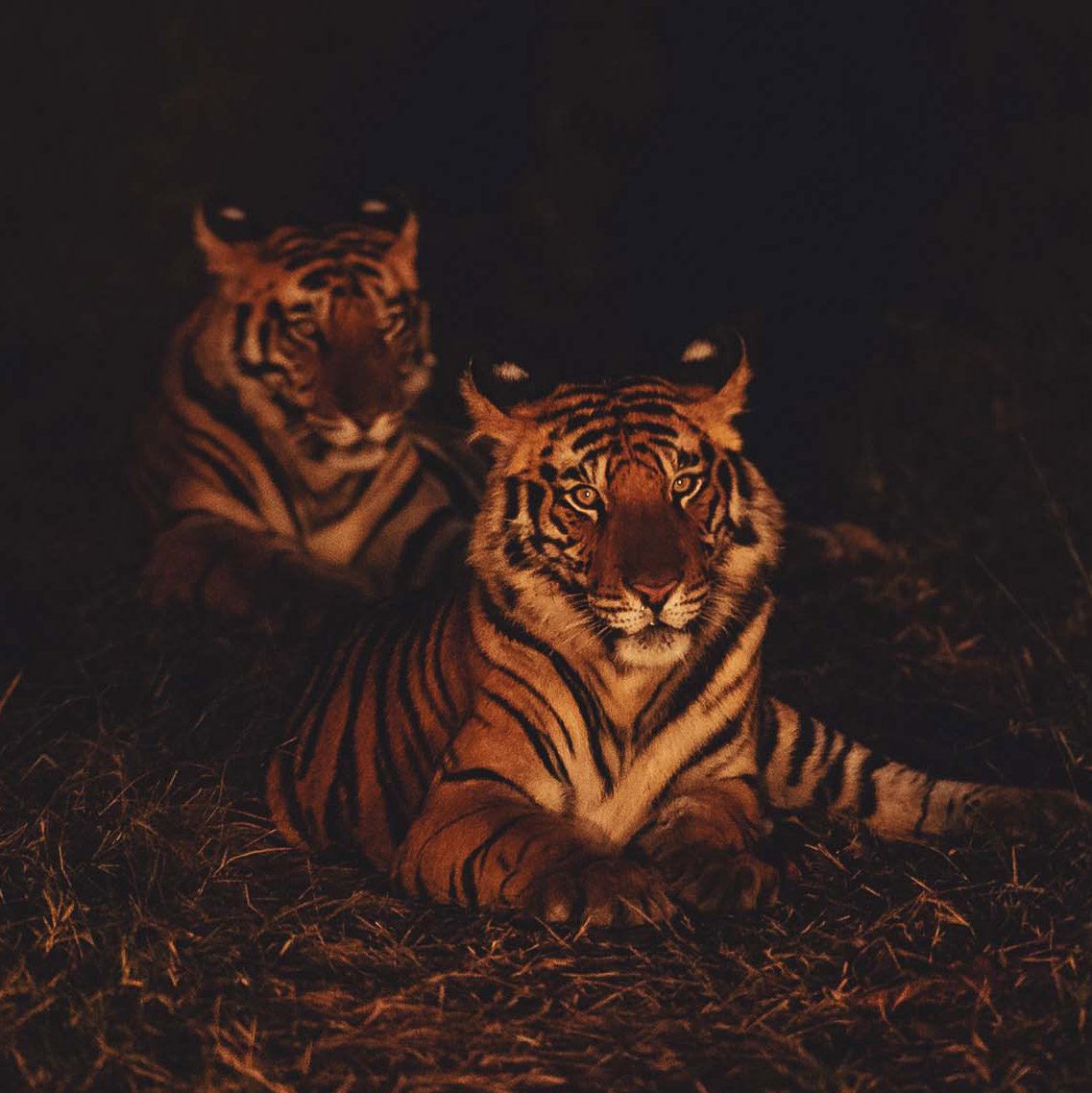
Bandhavgarh
This, just like Kanha is a mighty Sal forest and is spread in an area of 694 Sq. Kms (Approx.), is home to approx 55-60 wild tigers. This has given the park a lot of fame due to the highest density of Tigers in Central India, hence there are photographers who throng the place during summer to photograph the mammals… especially the Tiger!! The other predators here include the Leopard and the Wild Dogs/Dhole. Jackals, Jungle Cats and Sloth Bear are also seen in the park. Apart from the tigers and other predators, one could also watch the Spotted Deer, Sambhar Deer and Barking Deer. There are also antelopes like the Chowsingha/Four Horned Antelope and the Neel Gai. The Park has an abundance of Birdlife and has recorded about 300 species of birds of which some are migrants and most are residents.
The park also has mythological significance, as it is believed that the Bandhavgarh Fort was built by Lord Ram for his brother Laxman to keep a close watch on Lanka, hence the name Bandhavgarh (Bandhav- Brother; Garh- fort).
There is a majority of tribal living around this Park, mostly Gond and Baigas, the later being the most primitive tribe of mainland India!! They are warm and welcoming and are excellent trackers and spotters!!!
There is an option of having 02 safaris a day in an open Gypsy, between sunrise and sunset. One could also opt for visiting the fort, a 2.5 hrs trek (At the moment closed for tourism) and the Sleeping statue of Lord Vishnu ‘Sheshaiyya’. This need to be informed to the driver and Guide as one is entering the park so as to enable them to choose the designated route. It has been observed that the majestic Tiger makes its presence felt most of the time. The sighting of Tiger is a matter of chance, but Bandhavgarh leaves one mesmerized by the sheer beauty of the forest, Lakes and the Meadows.
Type of Forest: Moist Deciduous (Sal); Dry Deciduous (Saja, Tendu, Tinsa, etc.), Bamboo and Meadows.
Weather: Temperatures in Winter range from 10 degree celsius during the Day and can Drop to -10C late at Night and early mornings. Temperature in Summer range between 10-45 degree celsius
Sanjay Dubri
The Sanjay-Dubri tiger reserve is spread over an area 1674.511 sq. km. and consists of Sanjay National Park and Dubri Sanctuary along with buffer areas taken from Sidhi and Shahdol districts. It is situated on the north eastern part of the state of MP and is bordered by the Guru Ghasidas National Park on south, of which it was a part before formation of Chattisgarh in the year 2000. The reserve is part of the Bandhavgarh-Sanjay-Guru Ghasidas-Palamau landscape, and has been identified as one of four potential tiger meta-populations landscapes which require conservation inputs. The terrain of Dubri sanctuary is almost plain while that of Sanjay National Park is undulating. Various perennial rivers flow through the reserve viz. Gopad, Banas, Mawai, Mahan, Kodmar, Umrari and others.
The forest vegetation comprises of North Indian moist deciduous peninsular sal (3C/C2e) and North Indian dry deciduous peninsular sal (5B/C1c). The forests in the Dubri sanctuary range from dense to open sal forests with remains of degraded bamboo stumps. The national park area has dense to very dense forests with a closed canopy at many places, with thick bamboo clumps providing shelter to wild elephants. Tiger and elephant are the major species found in the reserve. Sloth bear and panther are other major attractions. Spotted deer, blue-bull, chinkara, barking deer and wild pig are the major prey species.
Type of Forest: Moist Deciduous (Sal); Dry Deciduous (Saja, Tendu, Tinsa, etc.), Bamboo and Meadows.
Weather: Temperatures in Winter range from 10 degree celsius during the Day and can Drop to -10C late at Night and early mornings. Temperature in Summer range between 10-45 degree celsius
Panna
Panna National Park is a national park located in Panna and Chhatarpur districts of Madhya Pradesh, India. It has an area of 542.67 km2. It was declared in 1994 as the twenty second Tiger reserve of India and the fifth in Madhya Pradesh. Panna was given the Award of Excellence in 2007 as the best maintained national park of India by the Ministry of Tourism of India. It is notable that by 2009, the entire tiger population had been eliminated by poaching with the collusion of forest department officials. The Ministry of Environment and Forests (MoEF) approved a proposal to translocate two tigers and two tigresses to the reserve. One female each from Bandhavgarh National Park (coded T1) and Kanha National Park (T2) were translocated to Panna Tiger Reserve. A tiger male, coded T3, was brought from Pench Tiger Reserve but strayed out of the park shortly thereafter, in November 2009. The tiger started walking towards its home in Pench National Park, indicating homing instinct. It moved steadily through human dominated landscape without causing any conflict. Forest department staff tracked it continuously for over a month and finally brought it back to the Panna Tiger Reserve. It then settled well, established territory and started mating. The tigress, T1, translocated from Bandhavgarh National Park, gave birth to four cubs in April 2010 of which 2 survive till date. The second tigress, T2, translocated from Kanha National Park gave birth to four cubs several months later and all four survive till date. A third tigress, coded T4, an orphaned cub was reintroduced to Panna in March 2011. She learnt hunting skills with the help of the male and mated with him. She was found dead on 19 September 2014 of an infection caused by its radio collar. Her sister T5 was released in Panna in November 2011. Thus four tigers and around 10 cubs of up to 2 years are settled in Panna Tiger Reserve at present and their progress is being regularly monitored by the Forest Department.
Type of Forest: Deciduous (Sal); Dry Deciduous (Saja, Tendu, Tinsa, etc.), Bamboo and Meadows.
Weather: Temperatures in winter range from 10 degree celsius during the Day and can Drop to -10C late at Night and early mornings. Temperature in summer range between 20-48 degree celsius.
Accessibility by Train: Katni/Jabalpur
Accessibility by Air: Jabalpur
Day 1: 29/5/22:
Jabalpur- Bandhavgarh
Arrival at Jabalpur. Our representative would meet you on your arrival. You would straight away proceed to Bandhavgarh by AC Innova (04 hrs.).
On arrival at Bandhavgarh, check-in into the resort.
Dinner and overnight stay.
Day 2: 30/5/22:
Bandhavgarh
With an early wake-up call, get set for the safari experience. Have a great morning drive. On your return to campsite have breakfast, relax refresh.
Lunch.
Post Lunch proceed for another Safari and return to the campsite just after sunset.
Dinner and overnight at stay.
Day 3: 31/5/22:
Bandhavgarh-Sanjay Dubri
With an early wake-up call, get set for the safari experience. Have a great morning drive. On your return to campsite have breakfast, relax refresh.
Pack up and leave for Sanjay Dubri (1.3 hrs.). Lunch at Parsili.
Post Lunch proceed for Safari and return to the campsite just after sunset.
Dinner and overnight at stay.
Day 4: 1/6/22:
Sanjay Dubri-Panna
With an early wake-up call, get set for the safari experience. Have a great morning drive. On your return to campsite have breakfast, relax refresh.
Lunch.
Post Lunch proceed to Panna.
Dinner and overnight at stay.
Day 5: 2/6/22:
Panna
With an early wake-up call, get set for the safari experience. Have a great morning drive. On your return to campsite have breakfast, relax refresh.
Lunch.
Post Lunch proceed for another Safari, and return to the campsite just after sunset.
Dinner and overnight at stay.
Day 6: 3/6/22:
Panna-Jabalpur
With an early wake-up call, get set for the safari experience. Have a great morning drive. On your return to campsite have breakfast, relax refresh.
Departure for Jabalpur.
Tour ends.
